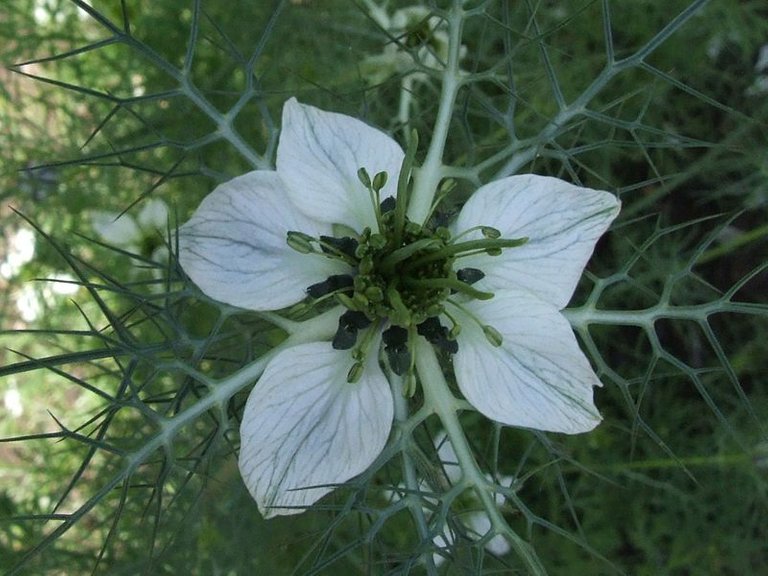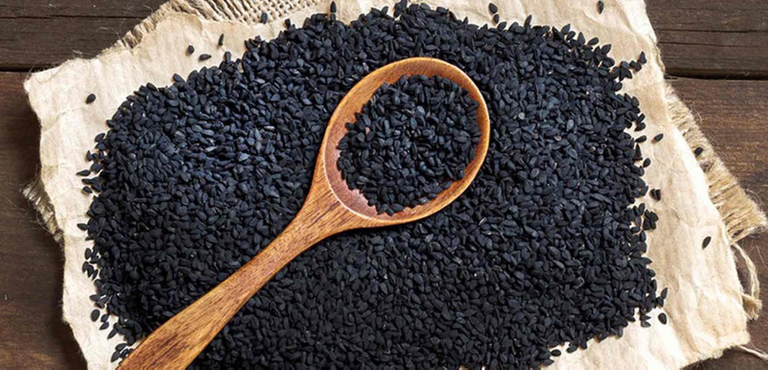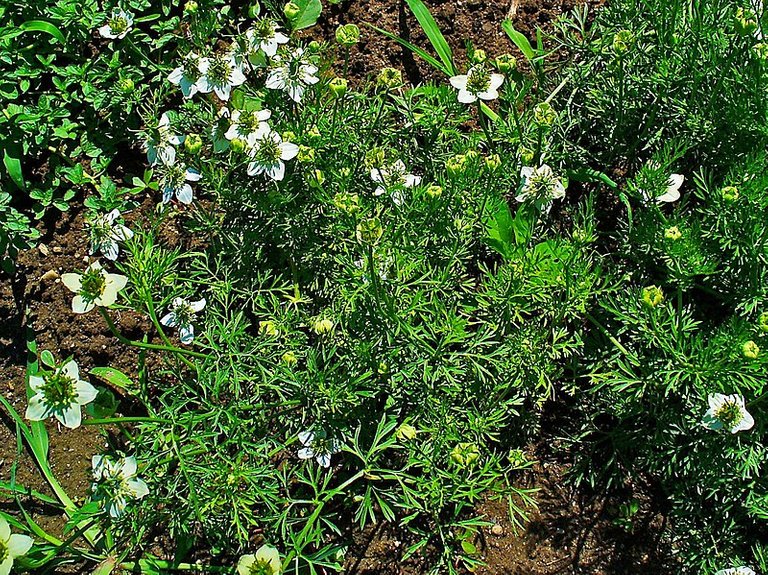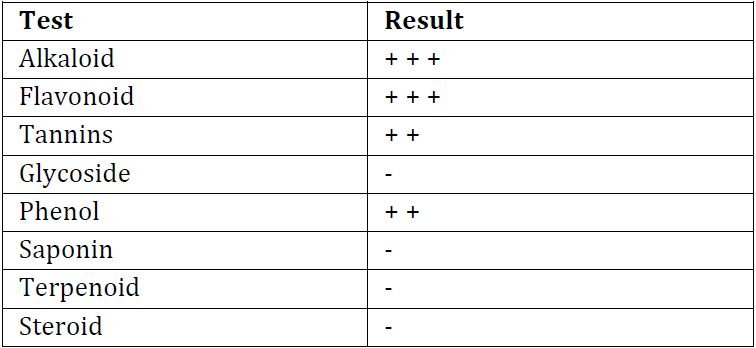Original Research: Protection of histomorphology of vital organs by methanolic seed extract of Nigella sativa against cadmium-induced tissue injuries in rats -1
It has always been a privilege and a great opportunity to share some of our research work here on the hive platform. Today's research is on a very useful plant seed that has been described by many as a wonder seed because of its numerous potential and healing properties. This seed has in the time past and to date, caught the attention of scientists because it does not only serve as a source of cure for some diseases conditions, it also helps in cell longevity.
One of my interests in research besides public health and clinical medicine is plant biotechnology. You would agree with me that, the majority of the drugs produced today all most of their origin traced to plants. The earliest ones were foxgloves (Used for treatment of cardiovascular issues) and Cinchona tree (from where quinine was extracted and used for malaria treatment). As the world advanced in technology, through modification of these parent drug molecules, more synthetically produced drugs have been made available for use in the treatment of various disease conditions.

Nigella sativa plant
One of the well-known facts about plants that have medicinal value is that they always contain bioactive molecules with healing and therapeutic potentials. Some of these plants can also be aromatic in nature (they contain aromatic compounds that are volatile at room temperature). The majority of these aromatic compounds are essential oils (compounds gotten from plant sources) and they are very useful in making perfumes, medical therapy like aromatherapy, etc.
This article will be an eye opener to as many people who are interested in natural remedies for disease management. Howbeit, it is important we know and understand this simple fact: all substances taken with the intention to cure or alleviate pain can still be termed drugs and these could be also herbal in nature. Regardless of their nature, all drugs are poisons. What makes them safe is the dosage.
So what do you stand to gain from our discussion for today? Well, I can say, they are limitless because I will be critically discussing this plant seed and the majority of the benefits it offers to us as humans. You sure do not want to miss out on this interesting expository.

Nigella sativa (Black cumin seeeds)
For our research work, we focused on analyzing the phytochemical properties of the plant Nigella Sativa plant seeds as well as critically examining one of its antioxidant potentials. Nigella sativa plant seed can be processed into its powdered form or its oil extracted. As usual, we will begin with the abstract of our research and then give a detailed introduction to the plant Nigella sativa aka Black seed, after which we then go further to expatiate our research work and findings using a rat model.
Abstract
Chemical-induced organ injuries have been on a fast rise for decades and these injuries have become common causes of mortality and morbidity in society. Edible plant materials with medicinal properties have been used for treating various diseases for many centuries in folk medicine. Recently, the role of food or medicinal plants in human health has received considerable attention. Traditional uses of N. Sativa seed range from soothing wounds to remedying cough, eczema, diabetes, inflammation of the bronchi, and toothaches; and these point to substantial tissue effects. We investigated the protective effects of methanolic seed extract of Nigella sativa (MENS) against cadmium-induced histomorphological alterations in the heart, kidney, and liver tissues of albino rats. Twenty-five (25) male albino rats, weighing (200±20g), were randomly grouped into five groups: A, B, C, D, and E. Group B (Negative Control) received intraperitoneal administration of cadmium chloride (CdCl2, 5mg/kg) only, group C received CdCl2 and low dose MENS (300mg/kg, oral), group D received CdCl2 and high dose MENS (600mg/kg, oral), and group E (Positive control) received CdCl2 and Vitamin C (200mg/kg, oral), for 14 days. Group A (Normal control) received no administration. Heart, kidney, and liver were harvested for histopathological analyses. Cadmium (CdCl2) induced significant histomorphological changes in the studied organs, and the heart was the most damaged of all the organs studied; however, a significantly ameliorative effect by methanolic seed extracts was observed. Nigella sativa seed extract is potentially tissue-protective against harmful chemical toxins like cadmium.
Keywords: Anticardiotoxic, cadmium, Nigella sativa, medicinal food, antinephrotoxic, ethnopharmacology, antihepatotoxic
The main results and critical discussion of our results will come in the sequel post to this. We will focus on the phytochemical components of the seed and as well share the phytochemical analysis results we got after the analysis of the seed. In the meantime, let's begin with a detailed review of this plant Nigella sativa, toxins that could pose a serious threat to us as humans (Cadmium chloride) and how they induce oxidative stress in us as humans.
Introduction
Nigella sativa (N. sativa) (Family Ranunculaceae), commonly known as black seed or black cumin or seed of blessing in different languages, is a grassy plant and has green to blue flowers with small black seeds. A few foods of plant origin and plant species have been thoroughly evaluated for their medicinal properties.

NIgella sativa plants
The medicinal properties of Nigella sativa have been reported to be due to its composition of stable and volatile oils which contain good amounts of unsaturated fatty acids, arachidonic acid, and eicosenoic acids in little amounts. Traditional uses of N. sativa seed range from soothing wounds to remedying cough, eczema, diabetes, inflammation of the bronchi, and toothaches.
One of the active ingredients of N. sativa is thymoquinone, a flavanoid with proven anti-inflammatory, anti-cancerous, anti-bacterial along with antihelmintic properties (it can be used for the treatment of parasitic worms). With the rapid increase in developments, environmental pollutants, and heavy metals (e.g. cadmium and lead inclusive), now top the list of toxicants that pose serious risks or threats to human health and wellbeing.
Cadmium is of great use, especially in the utilization of its conductor properties, and thus found to be of great importance in the manufacture of batteries and reactors. However, this element is found to be very toxic, even in very little amounts, and could cause abnormalities in humans after exposure. Cigarette smoking is considered to be the most significant source of human cadmium exposure.

Cadmium Crystal bar
When ingested, cadmium accumulates in the body with age and has an extremely long biological half-life. They can persist in the environment for a very long time, and this is a major concern for the health of humans. Since they persist long in the environment, this increases the chances of human food and water contamination.
Although cases of cadmium-induced nephropathy have been described in chronic exposures, recent studies suggest that cadmium at acute or low environmental exposures in industrialized countries can also cause subtle renal effects leading to a modest increase in the urinary excretion of low-weight micro proteins.
Exposure to cadmium could produce serious adverse effects in humans and one of the ways through which this happens is through induction of oxidative stress. Oxidative stress is a state of the body that is produced as a result of an imbalance or disequilibrium between the rate of production of oxidants in the body system and the rate of production of endogenous antioxidants that will counter the effects of these oxidants in damaging cells of the body.
Oxidants are produced in the body system due to some cellular physiologic activities. They are by-products of the metabolic breakdown of compounds like lipids or fats in the body. Some of the examples of these oxidants include reactive oxygen and nitrogen species, superoxide and the most notorious biomarker is malondialdehyde, a product of lipid peroxidation.
Antioxidants on the other hand are those molecules that help to eliminate or clear out oxidants in the system. Depending on their source, they could be produced endogenously (within the body e.g., Superoxide dismutase, catalase, etc.) or gotten from what we eat especially from fruits (vitamin C, vitamin E, etc.).
As the oxidants like cadmium continue to build up in the body system, they damage cells, organs, and tissues. In a bid to foster or boost the effect of endogenous antioxidants in the body, taking exogenous antioxidants like vitamin C will go a long way in restoring balance or equilibrium by increasing the level of antioxidants. It is naturally expected that the number of antioxidants should be fairly greater than the number of oxidants. We used vitamin C as a positive control because it is a well-known potent antioxidant.

Antioxidant Effects of Vitamin C on Oxidative stress
Cadmium chloride (CdCl2), recognized as an experimental toxin, is known to be highly cardiotoxic and may cause severe liver damage. Despite all studies performed to date, therapy choices for cardiac, liver, and kidney injuries are very few. Foods or plants with medicinal value have proven to be the foremost or first-line therapy choice in the treatment of diseases in most developing countries, and they provide important sources of most of the world’s pharmaceuticals; thus they have served as a valuable starting material in drug discovery or drug development.
As of conducting our research, no study has holistically evaluated the protective effect of black seed extracts against cadmium-induced histomorphological alterations of the heart, kidney, and liver in rats. The results from our research study were quite interesting because the black seed has excellent effects on the tissue injury we induced in the rats used as the model. All these and more details will be revealed in the sequel post.
Fresh samples of Nigella sativa seeds were obtained from a local market in Enugu, Nigeria. To ensure that the plant was confirmed to be truly black seed, the plant material was authenticated by a consultant taxonomist at the herbarium section of the Department of Plant Science and Biotechnology, University of Nigeria, and a voucher specimen was deposited at the herbarium with reference number UNH No 662 for future reference.
We did the preliminary phytochemical screening of N.sativa at the Department of Pharmacognosy, Faculty of Pharmaceutical Science, University of Nigeria. Procedures outlined by Trease and Evans16 were employed for the analyses.
Phytochemical analysis results of Nigella sativa we used
The result of the preliminary phytochemical analysis of Nigella sativa revealed an abundant presence of alkaloids and flavonoids (+++); a moderate presence of tannins and phenols (++). However, glycosides, saponins, and steroids were absent.

Key: +++ = present (in abundance); ++ = present (in moderate amount); − = absent
It is very important that we bear in mind that, the weather, seasonal changes, and climate conditions of a region could have a huge impact on the phytochemical constituent of a plant product. In essence, one would not expect to have exact constituents or similar concentrations of the bioactive components for all samples of Nigella sativa obtained from different regions or at different seasons.
The roles of some of the phytochemical constituents
The potency of Nigella sativa can be summarized as having the following properties - Anticancer, Anti-inflammatory & Immunomodulatory, Hypolipidemic, Reduction of oxidative stress, Cardioprotective & Antihypertensive, Antidiabetic, and Antimicrobial. The potency of Nigella sativa is clearly associated with its bioactive components.
One of the major active ingredients that are found in Nigella sativa seed is Thymoquinone, a very volatile compound that has high antioxidants and anti-inflammatory properties. Alkaloids have curative power but are very powerful poisons. They are known to have a strong impact on neurodegenerative diseases.
Because of the influential and multiple actions of alkaloids, they possess a variety of pharmacological potentials in modern medicine and the effects include analgesic (e.g., morphine), anti-hyperglycemic (e.g., piperine), anticancer (e.g., berberine), antiarrhythmic (e.g., quinidine), antibacterial (e.g., ciprofloxacin). Some other alkaloids exhibit stimulant effects on CNS (e.g., cocaine, caffeine, and nicotine) as well as psychotropic effects (e.g., psilocin)
I could remember discussing with a female colleague of mine during this research work telling me how she actually had heart issues and has been taking the black seed mixture for a long time and it has been working well for her. Never did she even have an inkling that one day, she will be involved in a research study to scientifically ascertain the potency of the plant.
The major area of interest to most scientists is the radical-scavenging ability of Nigella sativa. Radicals cause a lot of damage to the body system and as a result, can predispose the individual to diseases. The resultant effect could be fatal or could can reduced lifespan in people. Nigella sativa mops up a lot of radicals through its antioxidant ability.
In this current research work, we were able to demonstrate most of the highlighted potency of Nigella sativa on various organs. Interested in viewing the effects of these plant extracts on the kidney, liver, and heart? Join me in the sequel post as I will be revealing a lot of the histomorphological images showing the effects of Nigella sativa on vital organs of the body.
See you soonest and thanks for the read.
References
Role of Plant-Derived Alkaloids and Their Mechanism in Neurodegenerative Disorders
Effect of climate change on phytochemical diversity, total phenolic content and in vitro antioxidant activity of Aloe vera (L.) Burm.f.
Effects of seasonal changes on the quantity of pyhtochemicals
The role of thymoquinone, a major constituent of Nigella sativa, in the treatment of inflammatory and infectious diseases
For detailed references and access to the original work on research gate, please click HERE
In the raw form, most people who live in the rural areas of Asia and Africa tend to use herbs without dosage, and I still find it had to understand the reasons. A friend and I discussed this article for a long time some months back, and I decided to keep the link to the article because, she is keen to the fact that in 10 years she hasn't visited the hospital but rather self-medicated herself with herbal therapy, which she sees as the best.
Thanks a lot for sharing your research on Nigella sativa, I must confess that I enjoyed this.
I read the article and indeed it was Worth the read. Natural remedies use for disease management no doubt is gradually on the rise. Their Regulation remains a very crucial aspect that must be tackled to avoid abuse and excess dosage intake.
Thanks for this valuable feedback and good contribution to the article.
Congratulations!
✅ Good job. Your post has been appreciated and has received support from CHESS BROTHERS ♔ 💪
♟ We invite you to use our hashtag #chessbrothers and learn more about us.
♟♟ You can also reach us on our Discord server and promote your posts there.
♟♟♟ Consider joining our curation trail so we work as a team and you get rewards automatically.
♞♟ Check out our @chessbrotherspro account to learn about the curation process carried out daily by our team.
Kindly
The CHESS BROTHERS team
💖
Thanks for your contribution to the STEMsocial community. Feel free to join us on discord to get to know the rest of us!
Please consider delegating to the @stemsocial account (85% of the curation rewards are returned).
Thanks for including @stemsocial as a beneficiary, which gives you stronger support.
💞